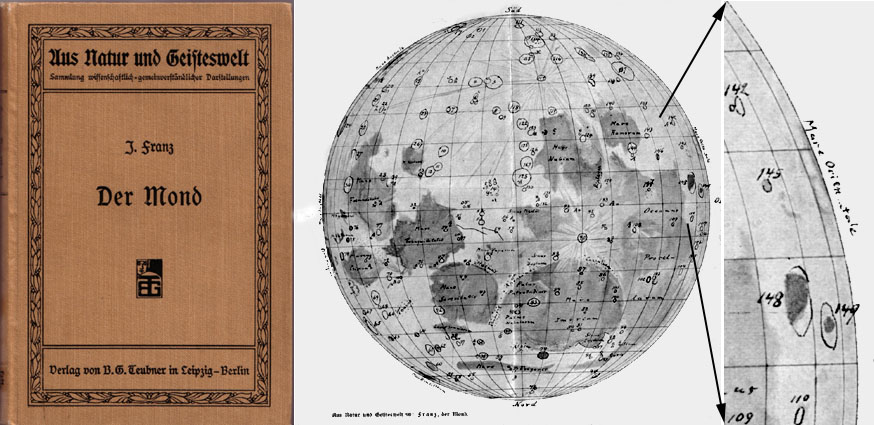October 1, 2004
Julius Franz and Mare Orientale
Image Credit: Chuck Wood |
|
Julius Franz and Mare Orientale Orientale - the mare and the basin - has a long history of independent discovery and community forgetfulness. Schroeter reported his discovery of the Rook and Cordillera mountains in the early 1800s. In 1874, the American geologist Shaler observed these mountains and correctly concluded that they were the rim of a large crater on the far side. In his 1906 book, Julius Franz, Director of the Observatory at the University of Breslau, included a small map with the name Mare Orientale on the eastern edge (but since 1960 - the western edge) of the Moon. Franz later named the related mare patches Lacus Autumni and Lacus Veris. In 1937, HP Wilkins made the second discovery of Mare Orientale, which he named Mare X. And in 1946 Patrick Moore independently rediscovered the mare and named it Mare Orientale. Finally, in the mid-1960s Bill Hartmann, then a graduate student working with Gerard Kuiper, projected lunar images on a large white globe and re-discovered that the Cordillera and Rook mountains were rings of a multi-ring basin. And finally in 1967, Lunar Orbiter IV resolved all ambiguities by imaging in glorious detail the bulls-eye of the Orientale impact basin. Surprisingly, nearly of these observers seemed oblivious to what had been done before them! Only Schroeter's naming of the Cordillera and Rook mountains was noticed. Related Links: Tomorrow's LPOD: Stereo Moon |
|
Author & Editor: Technical Consultant: Contact Translator: A service of: |
COMMENTS?
Register, and click on the Discussion tab at the top of the page.
Contributions to http://www2.lpod.org/ are licensed under a Creative Commons Attribution No-Derivative-Works Non-Commercial 3.0 License. 




